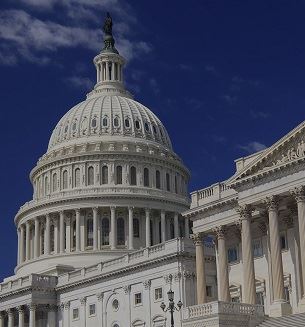Top Federal Appeal Lawyers: Expert Legal Support for Your Federal Appeal
Debunking the Refine of Federal Appeals: What You Need to Know
Browsing the intricate world of government appeals can usually appear like traversing uncharted waters for those not familiar with the process. Recognizing the subtleties of appellate court jurisdiction, the complexities of filing a notice of allure, offering a compelling short, and making an influential oral debate are important parts that can significantly affect the outcome of a situation. By deciphering the layers of complexity surrounding federal allures, people can get a clearer understanding right into the mechanisms that control this critical point of the lawful system.
Understanding Federal Appeals Refine
Delving into the complex realm of the federal appeals procedure unveils a organized and methodical trip through the judicial system. Federal allures offer as an essential system for reviewing decisions made by lower courts. Understanding this procedure is essential for anybody included in lawful procedures at the federal level.
The process normally starts with an event disappointed with a reduced court's judgment filing a notice of appeal. This triggers an evaluation by a higher court, where a panel of courts examines the legal disagreements presented by both events. Briefs describing the legal thinking behind each event's setting are sent, and oral disagreements may be heard to clarify complex problems.
The appellate court's choice is based on a complete examination of the reduced court's procedures and the arguments presented. The courts do not concentrate however reexamine truths on whether legal errors occurred that influenced the lower court's decision. As soon as the appellate court reaches a choice, it can attest, turn around, remand, or change the lower court's judgment, offering clarity and finality to the legal dispute. Recognizing this process is crucial for navigating the complexities of government appeals properly.
Appellate Court Jurisdiction Described
As we advance from recognizing the government appeals process to studying the complexities of appellate court jurisdiction, an essential aspect comes to light concerning the authority and limits of these greater courts in the legal landscape. Appellate court territory refers to the range of cases that a certain appellate court has the power to assess and determine upon. Unlike high court that listen to cases for the very first time, appellate courts are restricted to reviewing decisions made by reduced courts. These choices can include judgments from both state and federal courts.
Appellate courts have jurisdiction over certain sorts of instances, normally those including lawful errors, procedural problems, or concerns of law rather than valid conflicts. The territory of appellate courts is typically described in statutes and laws that regulate the court system. Recognizing appellate court jurisdiction is vital for events associated with the charms process as it identifies whether an instance is eligible for review and the extent to which the appellate court can interfere in the reduced court's decision.
Filing a Notification of Appeal
The first step in starting the government charms procedure includes submitting a Notification of Appeal with the proper appellate court. This critical record officially alerts the court and the other celebrations entailed in the situation that the appealing event intends to seek a testimonial of the lower court's choice. Filing a Notice of Appeal is a rigorous procedural need that establishes the appellate process in movement.
When preparing the Notice of Allure, it is necessary to make sure conformity with the certain rules and standards of the relevant appellate court. federal crime attorney. The document must usually include info such as the case name, the lower court's name, the day of the judgment being appealed, and a succinct declaration suggesting the grounds for the allure

Rundown and Dental Argument
In the appellate process, presenting created briefs and taking part in oral debates play crucial roles in promoting for the appealing event's placement prior to the appellate court. Briefs are comprehensive legal records that lay out the celebrations' arguments, legal authorities, and analysis sustaining their settings. These created submissions provide the court with an in-depth understanding of the truths of the situation, the relevant legislation, and why the appealing party thinks the lower court's choice should be overturned.
Adhering to the entry and evaluation of the briefs, oral arguments supply the parties an opportunity to additional clarify their settings, resolve any kind of inquiries the appellate courts might have, and highlight bottom lines from their composed briefs. Oral arguments are a chance for the lawyers to encourage the courts with verbal campaigning for and responses to inquiries from the bench.
Both the composed briefs and oral arguments are critical elements of the appellate procedure, enabling events to offer their instance thoroughly and compellingly prior to the appellate court. - federal crime attorney
Receiving the Appellate Court Decision
Upon conclusion of dental arguments and submission of created briefs, the following essential stage in the appellate process entails awaiting the definitive ruling from the appellate court. This period of expectancy can be full of a mix of anxiety and hope for parties included in the charm. The appellate court's choice is commonly provided in a composed style and outlines the court's verdicts on the lawful concerns presented, the thinking behind their decision, and the judgment made. The time structure for receiving the appellate court's decision can differ, but courts aim to offer prompt resolutions. Once the choice is provided, events have to very carefully review the court's ruling to recognize the outcome and identify any type of further steps that might be necessary. Whether the appellate court affirms, turns around, or remands the lower court's decision, comprehending the effects of the ruling is critical for all events associated with the appellate procedure. Therefore, immediately reviewing and comprehending the appellate court's decision is important in browsing the next actions in the lawful proceedings.
Conclusion
Finally, the government allures process is a complicated but vital action in seeking justice. Comprehending the appellate court territory, submitting a notification of allure, preparing briefs, and providing dental disagreements are all crucial elements of this process. Ultimately, getting the appellate court decision can provide clarity and resolution to legal disagreements. It is necessary to browse the federal allures process with diligence and attention to information to attain a reasonable outcome.
As we advance from comprehending the federal allures procedure to studying the details of appellate court jurisdiction, an essential aspect comes to light pertaining to the authority and limitations of these higher courts in the legal landscape. Appellate court territory refers to the scope of instances that a specific appellate court has the power to make a decision and assess upon. Unlike trial courts that listen to situations for the first time, appellate courts are limited to examining choices made by lower courts. Understanding appellate court territory is essential for events involved in the appeals process as it establishes whether an instance is eligible for evaluation and the level to which the appellate court can interfere in the lower court's best federal appeals attorneys virginia choice.
